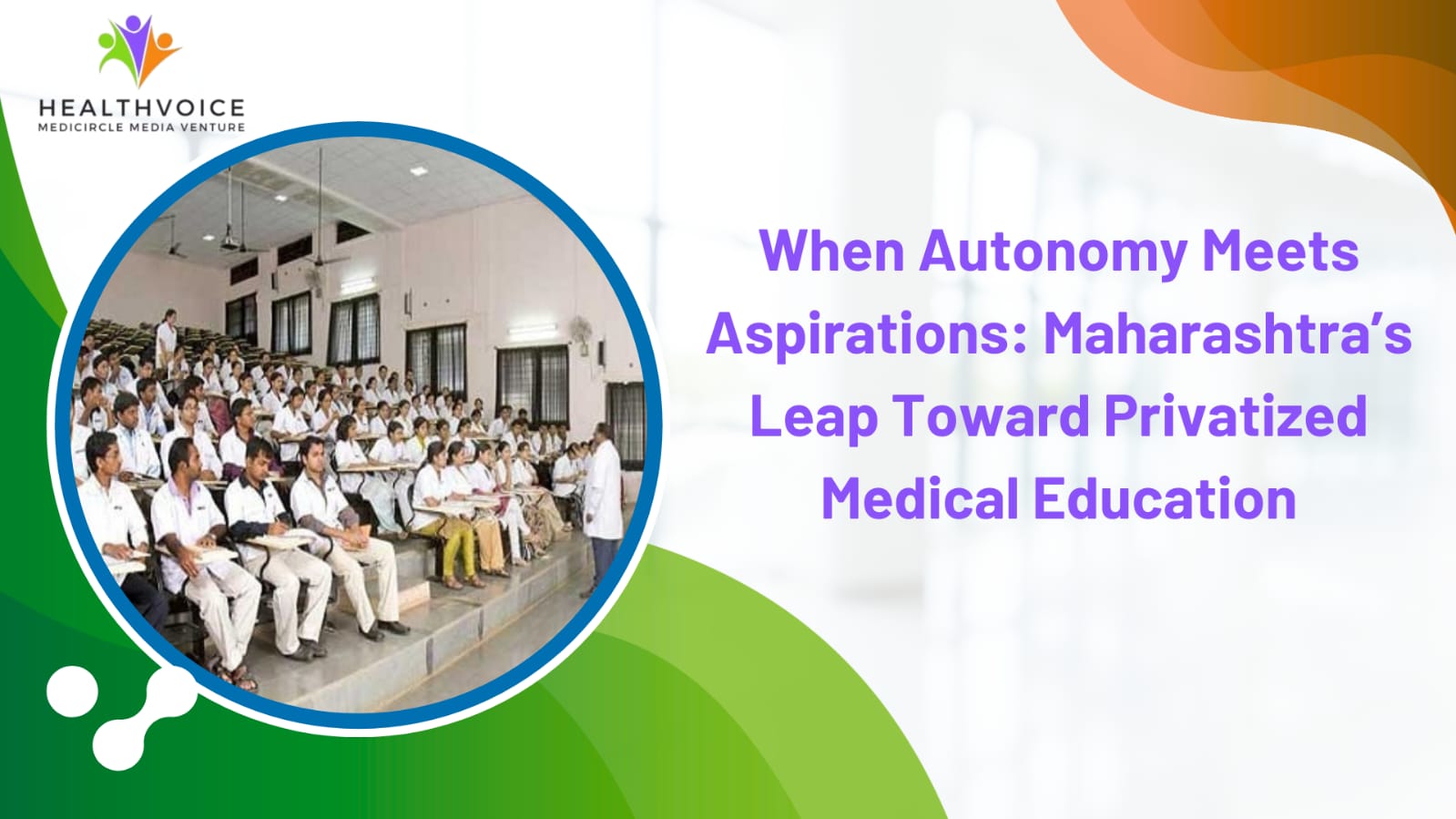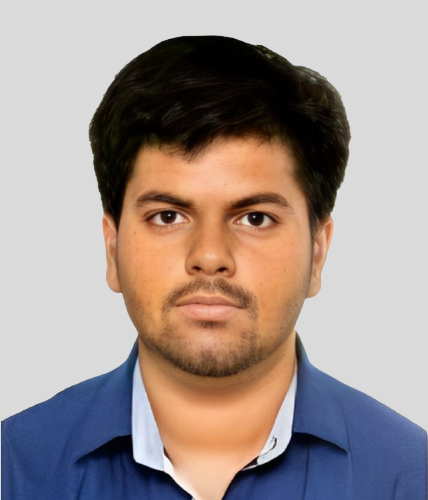When Autonomy Meets Aspirations: Maharashtra’s Leap Toward Privatized Medical Education
In the delicate balance between autonomy and accountability, between aspiration and affordability, lies the future of both education and healthcare in Maharashtra.

For decades, thousands of bright students from Maharashtra and across the country have struggled to find seats in medical colleges, forced by limited capacity and sky-high competition to either abandon their dreams or look beyond national borders. Ukraine, China, Russia, the Philippines have become destinations for Indian students desperate to wear the white coat, many of whom often return home only to face a challenge of licensing exams and recognition issues. Against this backdrop, the Maharashtra government’s latest move to allow private universities to start medical education courses marks a dramatic shift in how the state visualizes the future of healthcare training. It is a decision that excites some, alarms others, and inevitably ignites a debate about accessibility, affordability, and accountability.
The proposal is straightforward in theory but transformative in its implications. At present, private medical colleges in the state are affiliated with the Maharashtra University of Health Sciences, which ensures a standardized syllabus and central oversight of examinations and admissions. Fees are regulated through statutory mechanisms, providing a degree of uniformity across institutions. The new plan, however, will allow private universities to add medical courses to their portfolio. Those that already run medical colleges will be permitted to bring them under their own university umbrella, enjoying autonomy over curriculum design and examinations while still functioning within the larger framework of the National Medical Commission. The Maharashtra Private Universities Act, 2023, will need to be amended in the winter session of the assembly to make this possible, but interest is already strong, with five to six educational groups signaling readiness to step into this new era.
In practice, this autonomy means a group which already oversees multiple institutions, could eventually integrate its health science colleges under its private university status. While this may look like mere administrative housekeeping, the deeper impact lies in the freedom such universities will gain. The ability to craft their own syllabus, shape academic culture, and decide the pace of innovation could radically alter the quality of medical education delivered to students. Proponents argue this flexibility will make programs more responsive to the evolving needs of modern medicine rather than tethered to rigid state templates.
Chief Minister Devendra Fadnavis, who presided over the Maharashtra State Commission for Higher Education and Development meeting where the proposal was discussed, appeared determined to align education policy with demand. He directed the medical education department to move the plan forward in collaboration with the higher and technical education department. But he also added filters which states only universities with at least two decades of educational experience, an “A” grade in NAAC accreditation, and existing hospital infrastructure would qualify in the first phase. This is where the National Medical Commission’s requirements come in: a hospital with 300 to 500 beds is mandatory to launch a medical college. That condition means only serious players with robust health systems already in place will be considered. The idea is to avoid half-baked projects and ensure that only universities with proven capacity enter this high-stakes domain.
This decision aligns Maharashtra with several other Indian states that already allow private universities to offer medical courses. It also reflects a recognition of demand-supply imbalance that can no longer be ignored. Each year, over 15 lakh students appear for the National Eligibility cum Entrance Test (NEET), but only about 1 lakh MBBS seats exist across the country. The gap between aspiration and opportunity is enormous. Maharashtra alone witnesses thousands of students flying abroad for medical education every year, despite the risks of cultural adjustments, geopolitical instability, and questionable quality of training in some regions. By opening the door for private universities to expand capacity, policymakers hope to retain talent within the state while reducing the exodus to foreign shores.
The optimism, however, is tempered by unease. Parents associations and advocacy groups have already voiced concern that private universities, once given autonomy, will wield unrestricted power over fee structures. Unlike current private medical colleges that follow state-controlled fee regulation, these new universities could set fees at their discretion, potentially pushing costs beyond the reach of middle-class families. A seat in a private MBBS program already costs several lakhs annually; the fear is that under the private university model, this could soar to astronomical levels, making medicine an option only for the wealthy. In a country where equitable access to healthcare professionals is a pressing need, pricing aspiring doctors out of education could be a step backward.
Yet the supporters of this reform argue that the fear of unaffordability must be balanced against the reality of limited options. Families that today shell out crores to send their children abroad might prefer paying a fraction of that amount to keep them in India, even if it is still higher than regulated fees. Furthermore, quality control will remain under the National Medical Commission, which will ensure adherence to broad standards of infrastructure, faculty, and clinical training. The argument is that autonomy in designing syllabi will not mean absence of regulation but rather the introduction of flexibility where rigid systems have often stifled innovation.
There is also the question of what kind of doctors this system will produce. Will private universities, in their drive for recognition and excellence, push for modernized, globally aligned medical curriculam that prepare students for a world of evolving healthcare challenges? Or will they prioritize commercial viability, shaping education into an expensive commodity rather than a noble pursuit? The answer lies not just in government regulations but in how these institutions perceive their role i.e. whether as guardians of public health or as businesses selling a prized degree.
The government’s perspective plan for higher education, discussed in the same MAHED meeting, gives a sense of how expansive this vision is. For the 2026–27 academic year, 566 new locations were proposed for colleges across Maharashtra, with 359 already approved. Over the next five years, nearly 1,854 locations have been identified for new institutions. Parallel to the medical education reform, permissions are being considered for unaided social work colleges, a sector neglected since 2004 despite growing demand due to corporate social responsibility initiatives. The underlying theme is that Maharashtra is betting on education as a lever of growth, equipping the state with more skilled professionals across domains.
For medical aspirants, though, the heart of the matter is simpler. A chance to pursue their dream without leaving their homeland, without navigating war-torn countries or struggling with recognition battles upon return, is invaluable. The thought of having more seats available, more hospitals integrated into training, and more universities opening their doors is a ray of hope. But hope is fragile when weighed against affordability, transparency, and quality. A medical degree is not just another academic qualification; it represents the trust society places in an individual to safeguard life itself. When private universities are handed the responsibility to shape future doctors, the stakes are far higher than in engineering or management courses.
This is where the role of the National Medical Commission becomes crucial. The regulatory framework must not only check infrastructure but also guard against dilution of ethical standards, commercialization of medical practice, and exploitative fee structures. The promise of autonomy must not become a license for profiteering. The medical community, too, must reflect on how best to guide this transition. Senior doctors and professional associations have the responsibility to ensure that this reform enhances rather than erodes the sanctity of medical education.
The future of healthcare is intertwined with the future of medical education. More doctors mean greater access to healthcare for rural and underserved communities. More universities mean greater opportunities for research and innovation. But more autonomy without adequate checks could mean more exclusion, where only a fraction of society can afford to enter the profession. Maharashtra stands at a crossroad, and the choices it makes in the coming months will ripple far beyond state boundaries, touching the very fabric of healthcare delivery in India.
As the winter session of the assembly approaches, lawmakers will weigh the proposal to amend the Maharashtra Private Universities Act. Parents will anxiously calculate what this might mean for their children. Students will dare to dream of new possibilities. Doctors will worry about dilution, while policymakers will celebrate expansion. In this swirl of emotions and calculations, one fact remains undeniable i.e. medical education is not just another sector for reform. It is the foundation upon which the health of millions rests. And in the delicate balance between autonomy and accountability, between aspiration and affordability, lies the future of both education and healthcare in Maharashtra.
 Sunny Parayan
Sunny Parayan
#healthvoice #MedicalEducation #MaharashtraEducation #FutureDoctors #HealthcareReform #PrivateUniversities #MBBSIndia #DoctorsOfTomorrow #AffordableEducation #HealthcareAccess #NMC #EducationPolicy #MedicalSeats #HealthcareForAll #StudentsFirst #MedicalAspirants
